Table of Contents
If you’ve ever asked an IT support worker what their workload is like, they’ll likely tell you they’re swamped — whether they’re dealing with endless password reset requests, troubleshooting networking issues, or responding “have you tried turning it on and off again?”
The demands never cease, the inbox never empties. It’s tireless work, but someone’s got to do it.
But what if that someone wasn’t a “someone” at all — but a something.
Unless you’ve been hiding under a large boulder, you’ve probably noticed the recent rise of AI. It’s in our search engines, our messaging apps, and increasingly, our mobile phones. For better or worse, it’s inescapable. But while not all of its applications are helpful or healthy, AI-powered chatbots are undeniably useful in customer support scenarios.
Today’s AI-powered tools can handle complex queries, integrate with ticketing systems, automate workflows, and even predict issues before they escalate. If your IT department’s under constant pressure, they’re an ideal antidote.
Below, we dive into ten of the best AI Chatbot Platforms on the market. Some focus on speed, providing instant answers to common problems. Others shine in their integrations, plugging into helpdesk software or monitoring systems to deliver seamless support. But they all have one thing in common: they’re worth the price tags attached to them.
What’s the difference between AI and automation?
Before we jump into the list, let’s clear up a question that pops up a lot: isn’t AI just automation with extra steps?
Not exactly.
Automation is like having a set of pre-written scripts that run whenever a certain condition is met. Think: “If a user requests a password reset, then send them the reset link.” It’s fast, it’s efficient, but it’s rigid. If the request doesn’t match the script, the system has no idea what to do.
AI, on the other hand, is more like having a co-worker who learns on the job. It can understand natural language, adapt to context, and even improve over time. Where automation is about repeating tasks with precision, AI is about handling nuance and complexity.
In IT support, that means the difference between a chatbot that can only spit out canned responses and one that can actually troubleshoot, escalate, or connect dots between issues.
The best systems, of course, blend both. Automation handles the grunt work, while AI brings in the brains. Together, they’re a force multiplier for overstretched IT teams.
1. Crisp
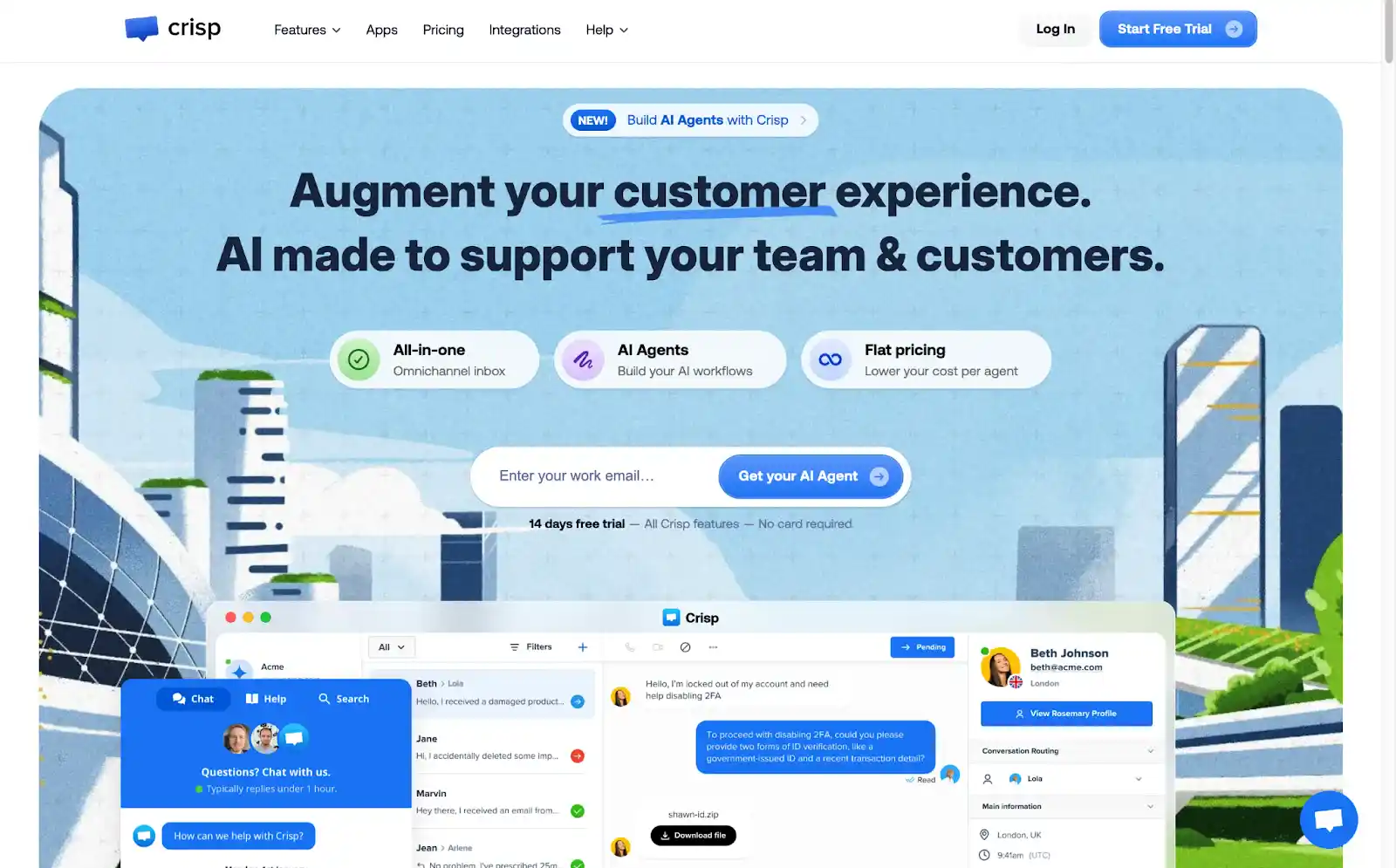
Crisp is best known as a live chat platform, but its AI features make it stand out in the IT support game. Instead of just passing messages between users and agents, Crisp’s chatbot can handle FAQs, detect intent in user queries, and route complex problems to the right technician. It even comes with a shared inbox that unifies email, chat, and social media messages — so no matter how someone reaches out, they won’t get lost in the shuffle.
For IT departments, Crisp’s real value lies in its integrations. You can connect it to ticketing systems, CRMs, and even automation workflows, turning what could be a scattered support operation into one smooth-running machine. And because it’s conversational AI rather than a static decision tree, users don’t feel like they’re fighting with a glorified vending machine.
If you’re looking for a chatbot that improves both customer experience and IT efficiency without requiring a PhD to set up, Crisp is a solid place to start.
2. Tidio
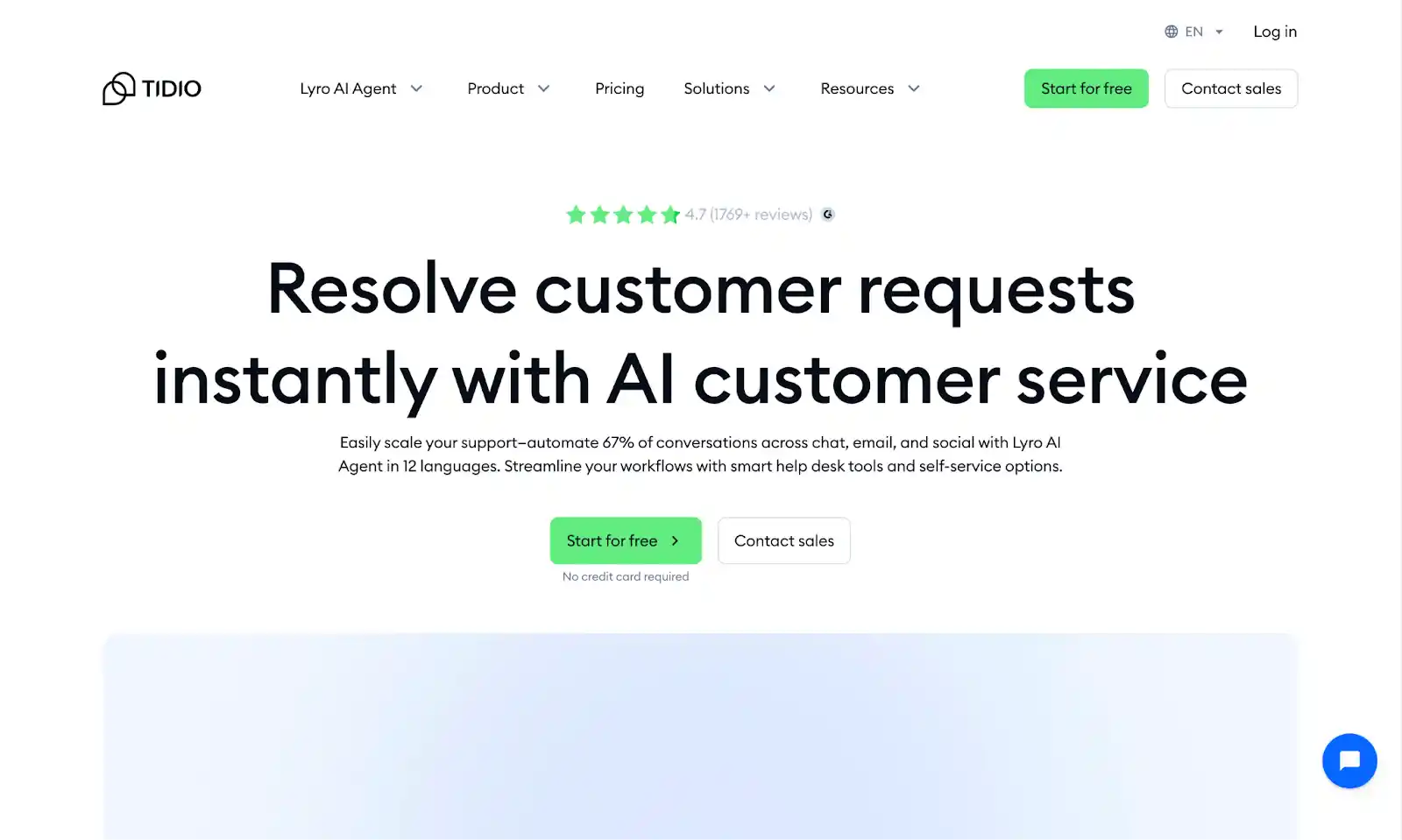
Tidio rounds out our list as a versatile chatbot platform that works well for both customer service and IT helpdesks. It’s lightweight, affordable, and surprisingly powerful once you start digging into its AI features.
Tidio’s bot can understand natural language, pull answers from knowledge bases, and handle repetitive questions like a champ. For IT teams, that means fewer “where’s the Wi-Fi password?” interruptions. And because it supports multiple channels (web, email, social), it keeps conversations consolidated in one place.
What’s nice about Tidio is its accessibility. You don’t need to be an AI engineer to get it working—its drag-and-drop builder makes it easy to create flows, and its AI features come pre-trained for common scenarios.
For smaller organizations or IT departments just dipping their toes into AI support, Tidio is an approachable entry point that doesn’t sacrifice too much power.
3. Freshdesk (Freddy AI)
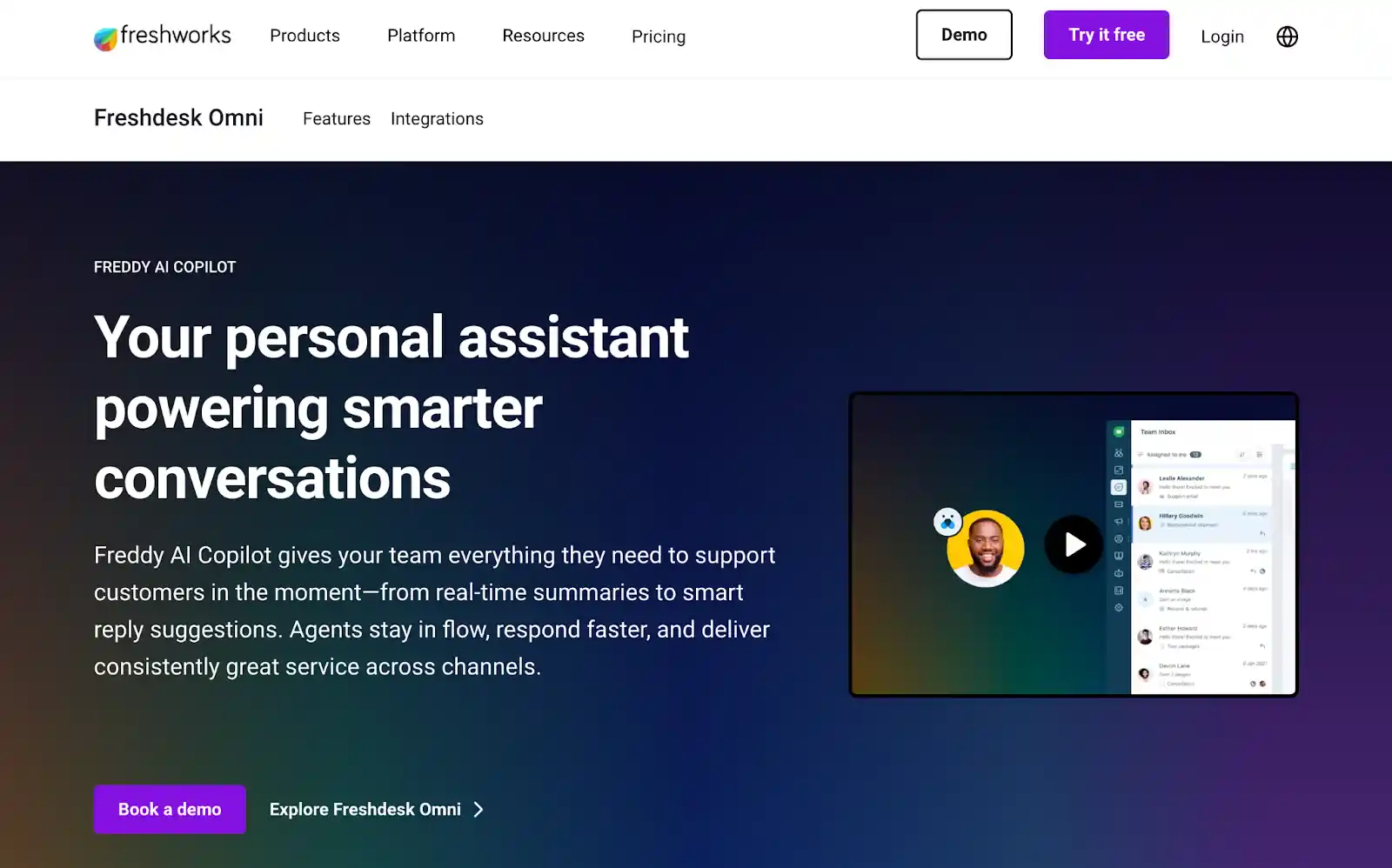
Freshdesk is already a popular choice for managing IT tickets, and their AI assistant, Freddy, levels up the experience. Freddy can auto-triage tickets, suggest solutions based on historical data, and even help agents draft replies.
For users, this means faster, more accurate responses. For IT teams, it means less time wasted categorizing and reassigning tasks.
One of Freddy’s strongest suits is predictive intelligence. If it notices a surge in certain types of issues (say, a spike in VPN outages after a new update), it can alert the team before the problem snowballs. That proactive angle makes a big difference when you’re trying to stay ahead of the chaos.
Freshdesk also supports self-service portals powered by Freddy. Employees can get answers through a knowledge base that actually improves over time as Freddy learns from resolved tickets. It’s not just a static FAQ—it’s a living, learning support hub.
For IT departments already in the Freshworks ecosystem, Freddy is a no-brainer. But even if you’re not, its AI chops make it a strong contender worth checking out.
4. Zendesk (Answer Bot)
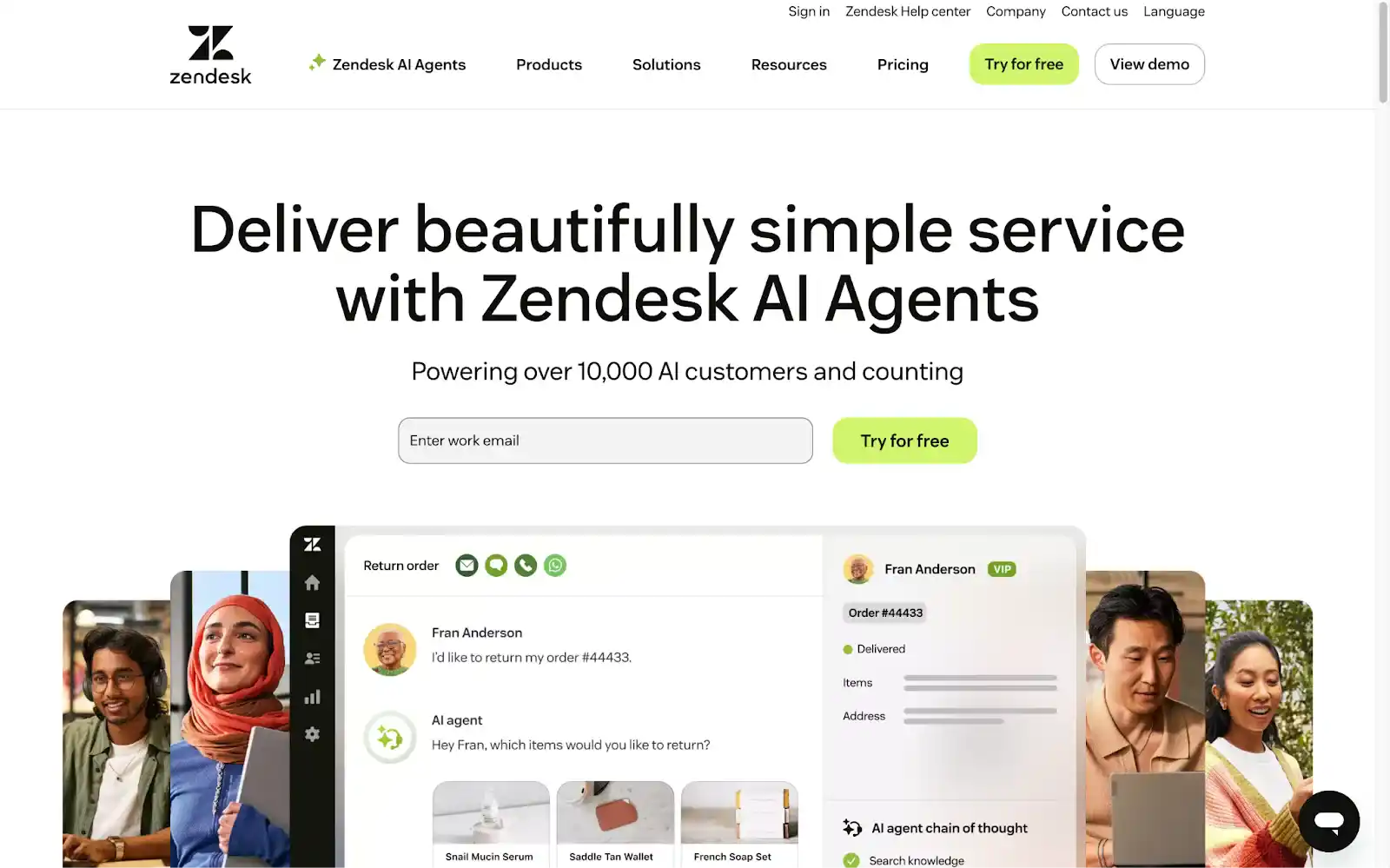
Zendesk is synonymous with customer service, and their AI Answer Bot has become a staple in both customer support and IT helpdesk setups. What sets Answer Bot apart is how seamlessly it blends AI with Zendesk’s massive ticketing and knowledge base ecosystem.
Instead of dumping users on an agent for every little problem, Answer Bot can suggest relevant articles, guide troubleshooting steps, or even close out basic requests without a human ever touching them. It’s like a tier-one support rep that never takes a coffee break.
Answer Bot also plays well with Zendesk’s workflow automations. That means once a request moves past the bot, it’s already tagged, categorized, and routed to the right queue. For IT teams juggling multiple systems and service requests, that’s a huge time saver.
Another plus: Zendesk’s analytics make it easy to measure where Answer Bot is succeeding (and where it’s falling flat), so you can continuously improve how it handles IT tickets. If your team is already on Zendesk, using Answer Bot is almost a no-brainer.
5. Telnyx Flow – AI-Powered Chatbots Built for Real-Time IT Support
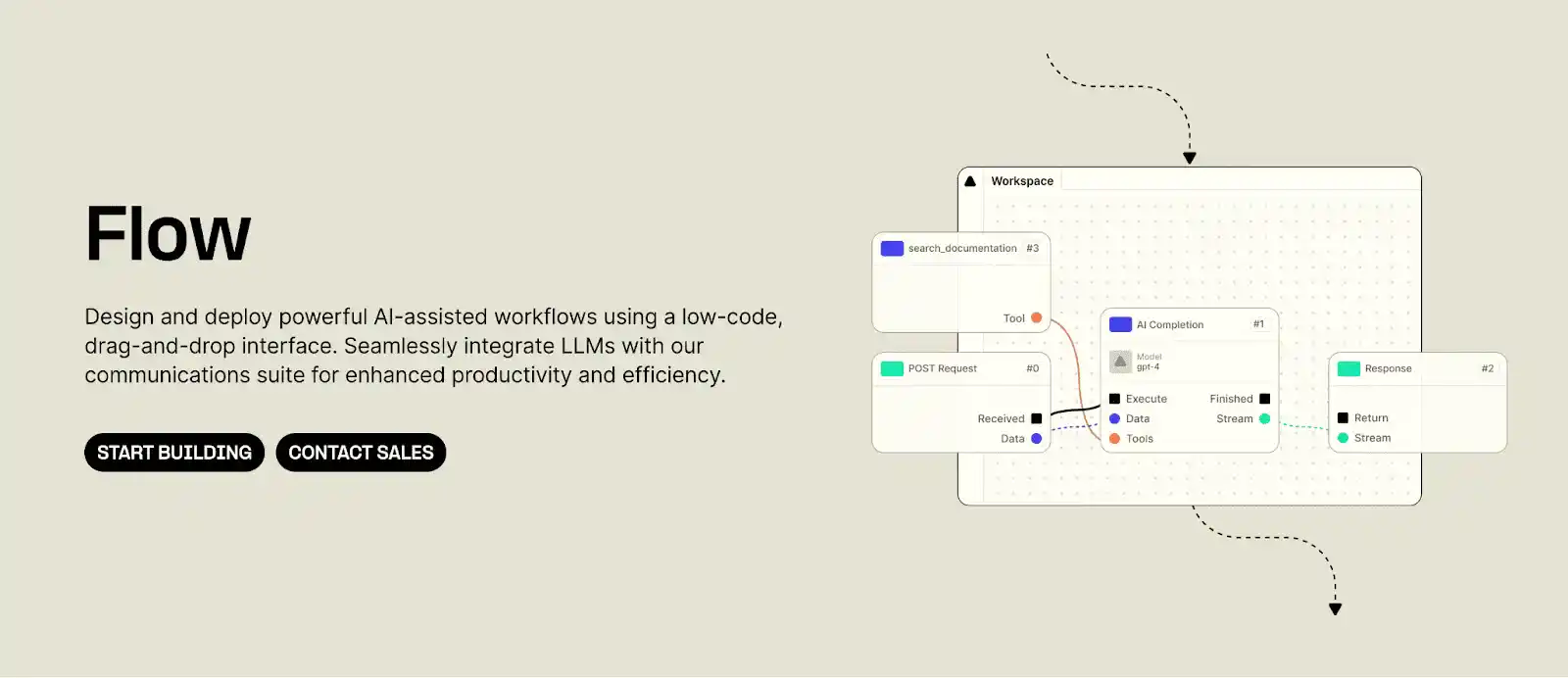
Telnyx Flow is a low-code platform that lets businesses build AI-powered chatbots for IT support, powered by Telnyx’s global communications network. With a visual drag-and-drop interface, teams can create intelligent bots that automate tier-1 tasks like password resets, troubleshooting, and account unlocks with no coding required.
Flow supports natural language understanding via integrations with tools like OpenAI or Dialogflow, enabling bots to interpret user intent and trigger real-time actions. Bots can operate across SMS, WhatsApp, voice, or web chat, connecting directly with systems like ServiceNow or Zendesk for seamless support experiences.
Key Features
- Low-Code Bot Builder: Drag-and-drop workflow design—no devs needed.
- AI/NLP Support: Understand and respond to IT queries using AI models.
- Multi-Channel Deployment: Chatbots across SMS, voice, WhatsApp, and more.
- Real-Time Automation: Trigger IT actions based on user inputs instantly.
- Enterprise-Grade Reliability: Built on Telnyx’s private, low-latency network.
Why It’s a Top Pick
Telnyx Flow stands out by combining AI automation with telecom-grade infrastructure. It empowers IT teams to deploy scalable, intelligent bots that reduce support tickets and resolve issues instantly—without complex integrations or heavy developer resources.
6. Moveworks
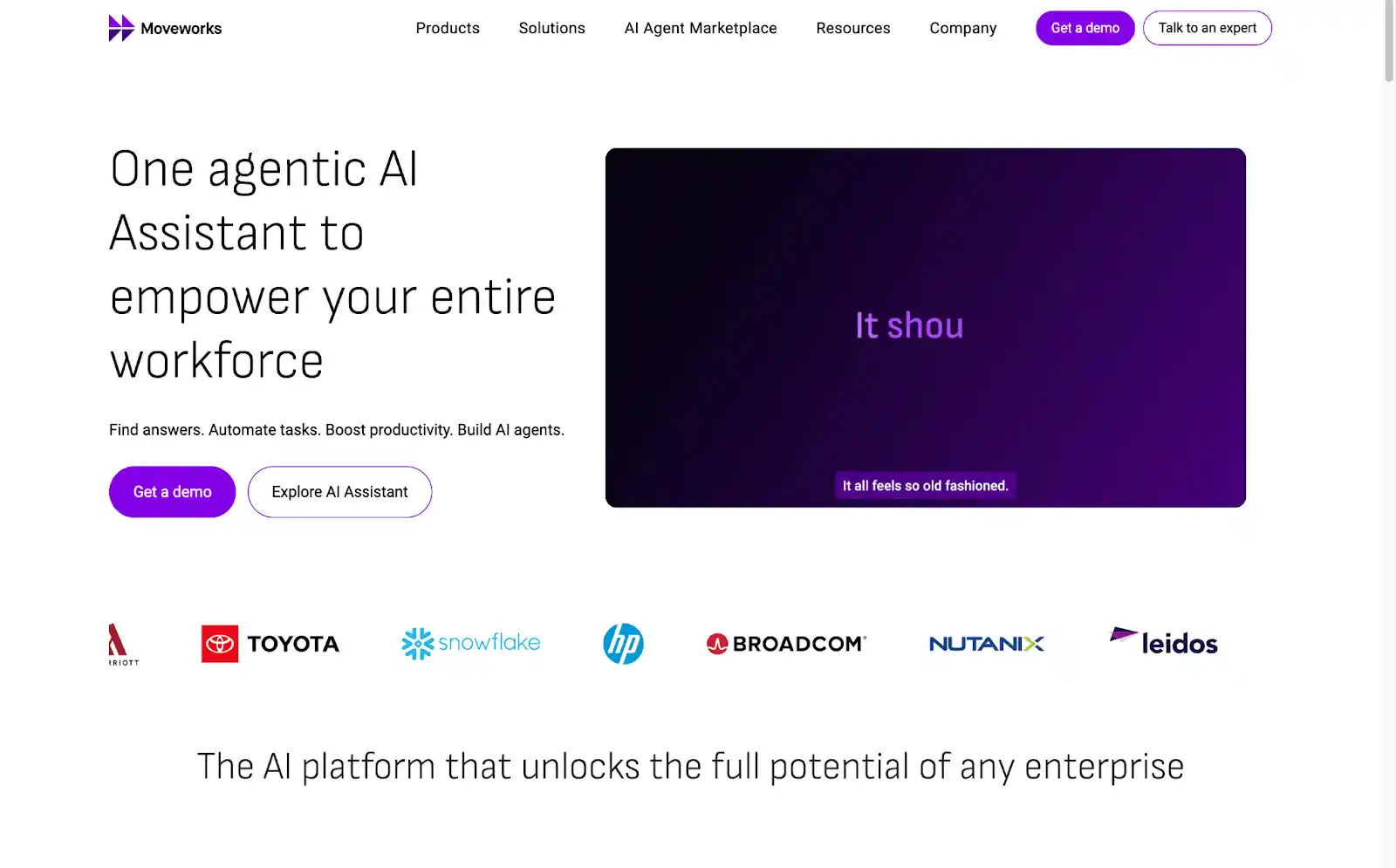
Moveworks takes a different approach—it’s not just a chatbot bolted onto an IT system, it’s a full-on AI platform built specifically for IT support. Instead of scripting rules or building conversation trees, you let Moveworks loose on your existing systems and it uses natural language understanding to resolve requests automatically.
For example, an employee might type “Need access to Salesforce” in Slack or Teams. Moveworks jumps in, verifies permissions, handles the workflow, and completes the request without IT lifting a finger. That kind of end-to-end resolution is where Moveworks really shines.
It’s also got a knack for integrating with collaboration platforms. If your workplace lives in Microsoft Teams or Slack, Moveworks slots right in, making it feel less like “another tool” and more like a native extension of the apps people are already using.
For companies dealing with large, complex IT environments, Moveworks is one of the few solutions that feels like a genuine co-pilot for the IT department rather than just a chatbot.
7. Aisera
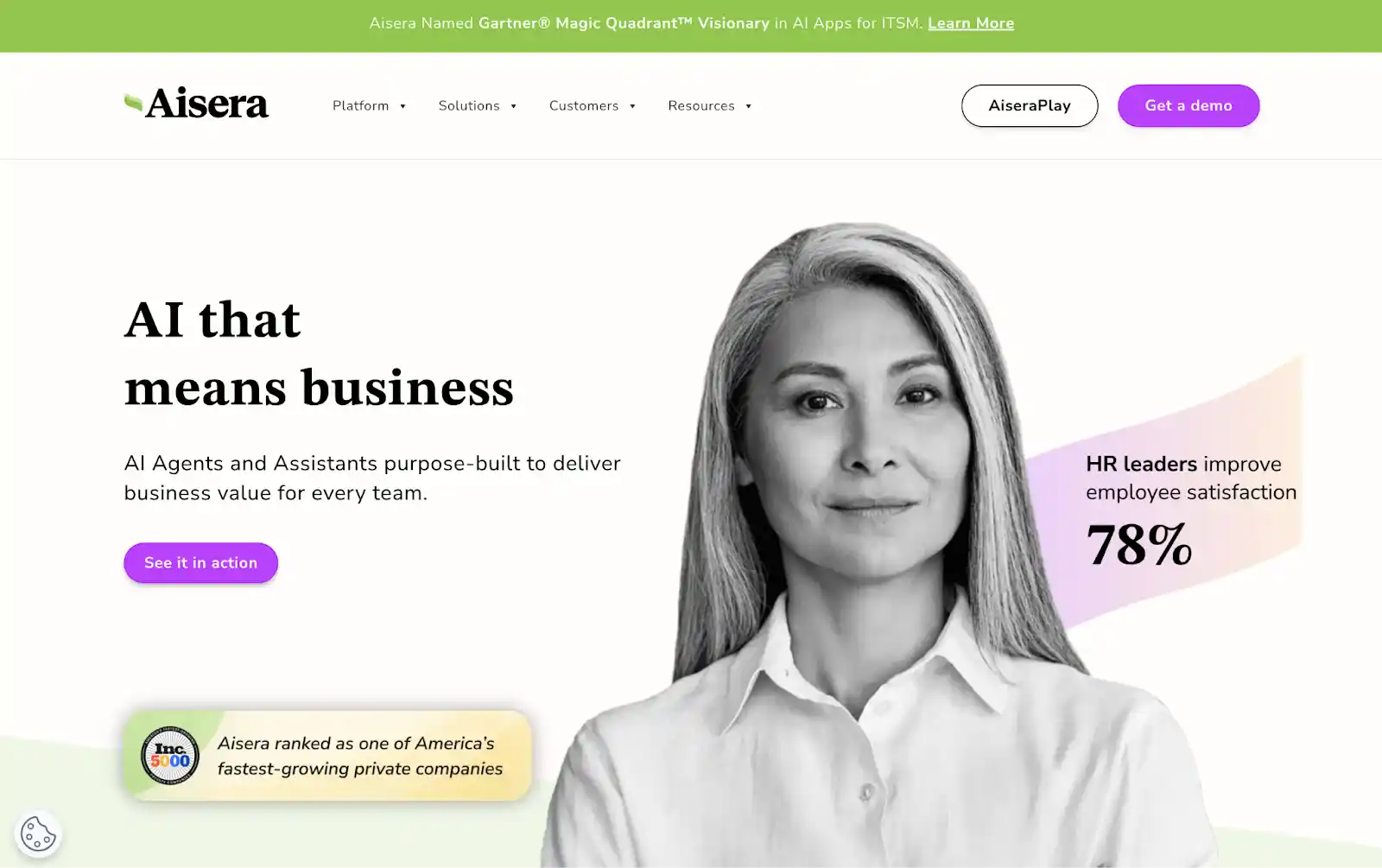
Aisera positions itself as an AI service desk, blending conversational AI with workflow automation. What makes it powerful is its ability to learn from your existing knowledge bases, past tickets, and documentation. So instead of starting from scratch, it gets smarter right out of the gate.
For IT, Aisera’s strengths lie in automation. It can reset passwords, provision accounts, and execute common fixes without an agent ever getting involved. Meanwhile, its AI-driven virtual assistant handles employee queries in natural language, so users don’t feel like they’re interacting with a clunky script.
Another standout feature is Aisera’s ability to predict and prevent issues. If it spots a recurring pattern in tickets, it can raise a flag before it becomes a full-blown outage. That proactive angle makes it less of a reactive chatbot and more of a strategic IT ally.
If your team wants AI that goes beyond chat and into real operational impact, Aisera is worth a serious look.
8. ServiceNow Virtual Agent
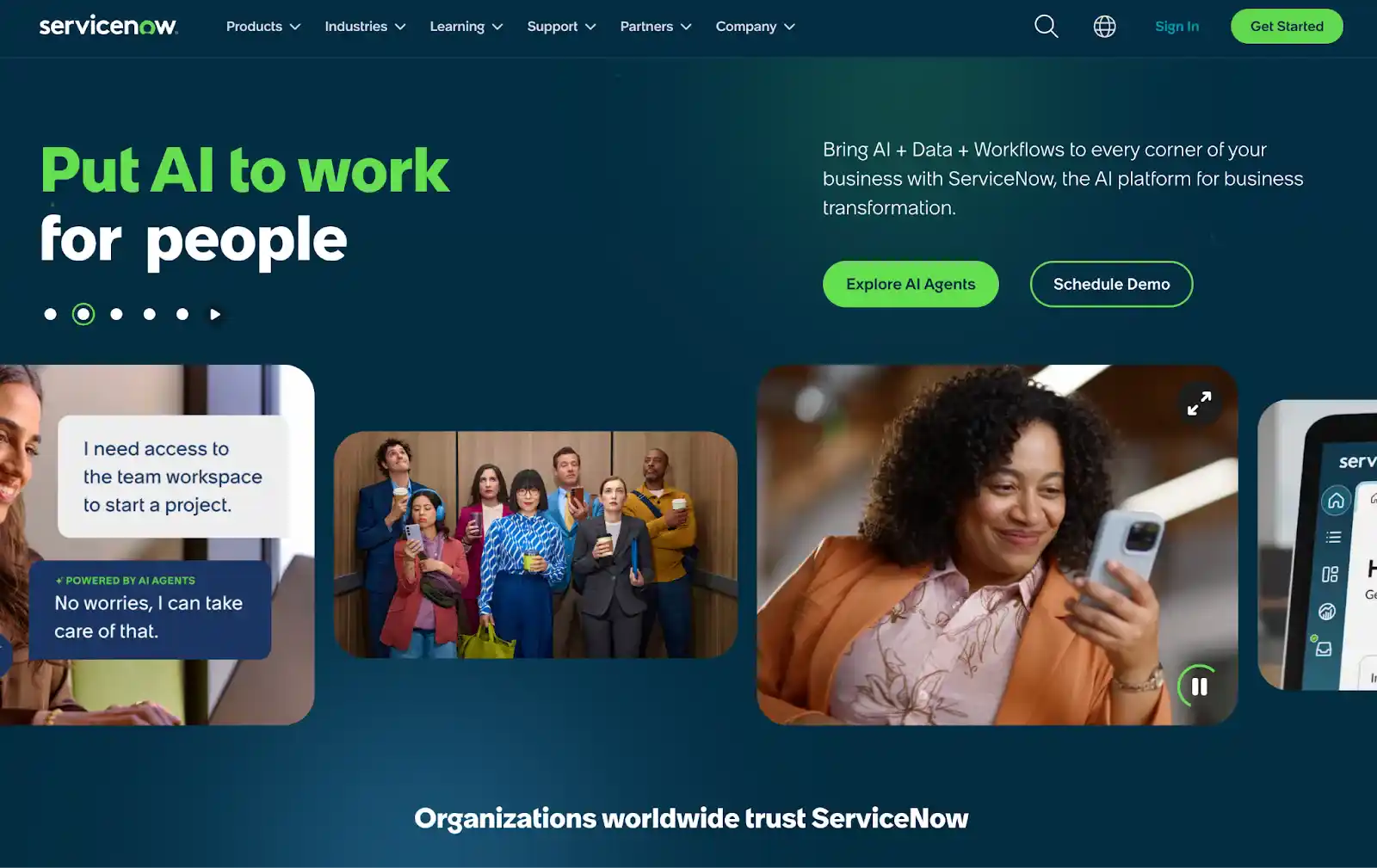
ServiceNow is already a juggernaut in IT service management, and its Virtual Agent is a natural extension of that ecosystem. Instead of just answering questions, it taps into the deep automation capabilities of ServiceNow to actually do things—like ordering hardware, updating records, or approving requests.
What’s great about ServiceNow’s Virtual Agent is that it’s not trying to be clever for the sake of it. It’s highly task-oriented, focused on streamlining repetitive IT processes that normally clog up service desks. Plus, it’s customizable—you can build conversation flows that match your specific workflows.
And since ServiceNow is already the backbone of many IT operations, the Virtual Agent becomes a native, no-friction way to extend automation into user conversations. If your organization is heavily invested in ServiceNow, skipping the Virtual Agent would be leaving money on the table.
9. IBM Watson Assistant
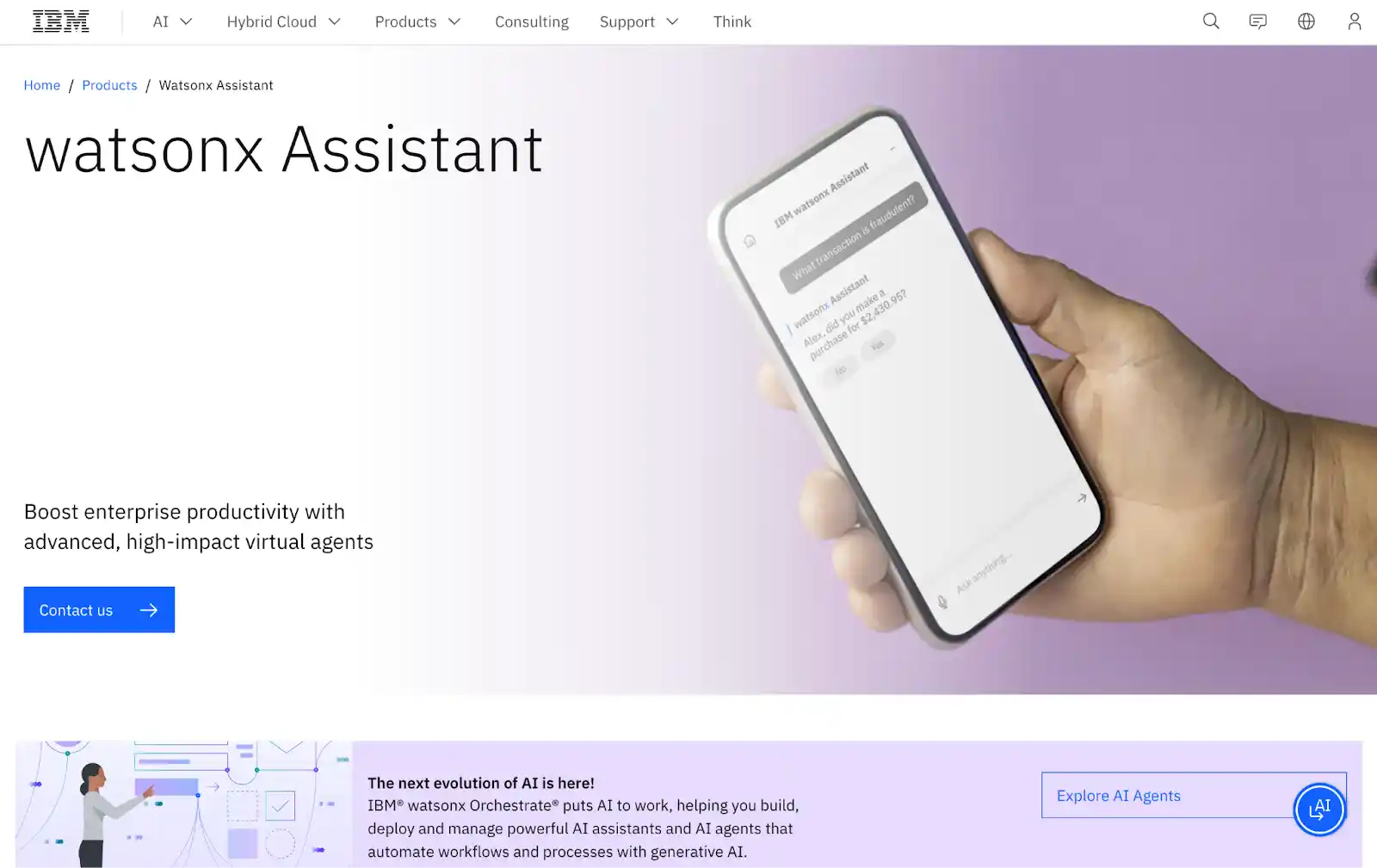
IBM Watson has been around the AI block for a while, and its Watson Assistant remains a strong player in IT support. What Watson does well is context. It doesn’t just answer questions—it remembers previous interactions and keeps conversations flowing naturally.
That’s especially helpful in IT scenarios where issues can get complicated. A user might start with “My laptop’s running slow,” then later add, “Also, I can’t connect to the VPN.” Instead of treating those as two separate problems, Watson links them together and continues the same support thread.
Watson also integrates with multiple channels, from web chat to Slack to mobile apps, making it a versatile option. And because it’s backed by IBM’s machine learning smarts, it’s got serious flexibility when it comes to customizing for your organization’s needs.
For IT teams that need a chatbot with advanced natural language capabilities and enterprise-grade reliability, Watson’s still a top contender.
10. Intercom (Fin)
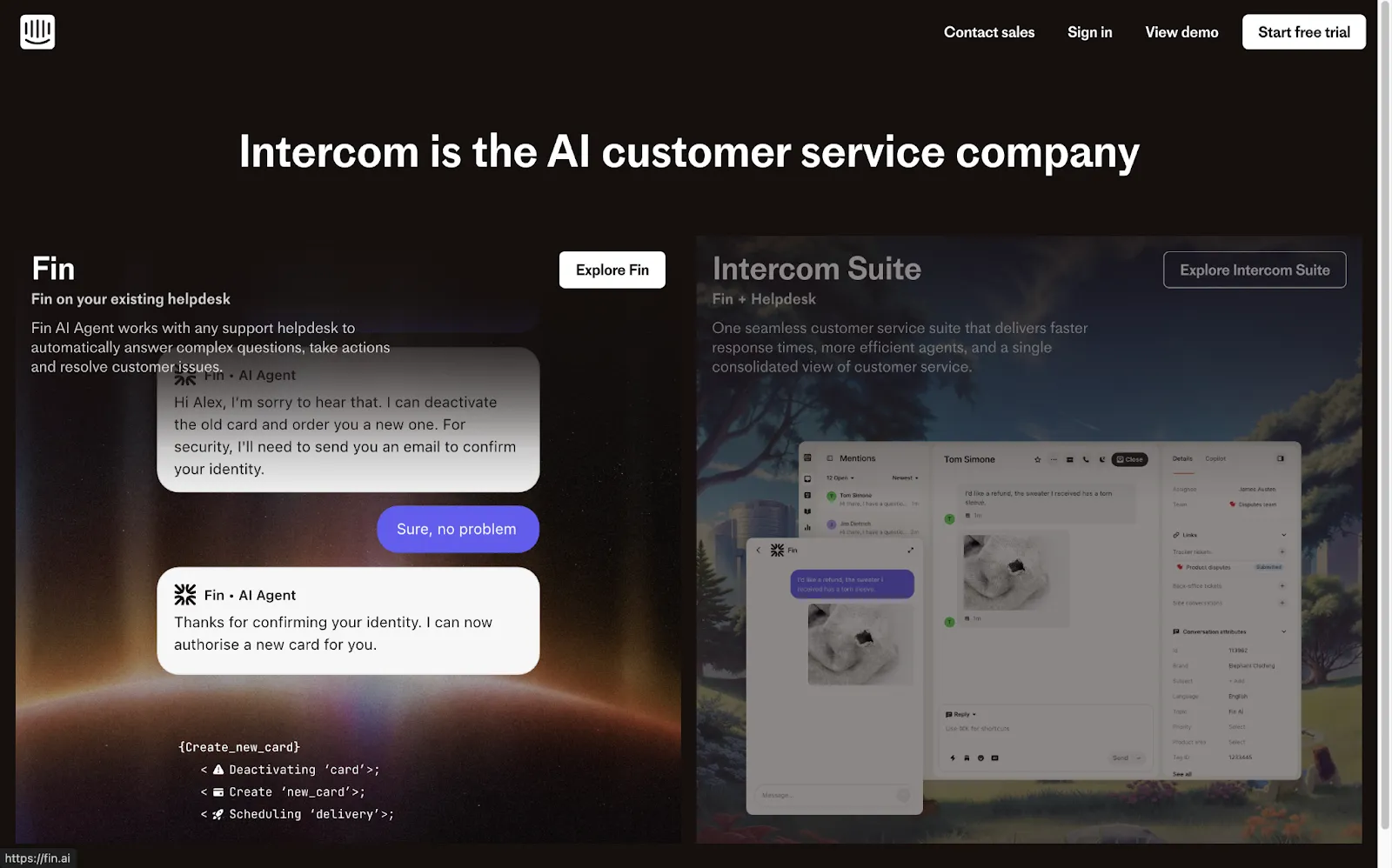
Intercom is practically a household name when it comes to customer communication tools, but its AI chatbot features aren’t just for sales and marketing teams—they pull serious weight in IT support, too.
The platform’s bot, Fin, uses natural language processing to actually understand user intent, not just keywords. That means it can parse questions like “Why isn’t my VPN connecting from home?” and serve up the right guidance instead of just pointing users to a generic help doc.
Where Intercom shines is in its ability to deflect repetitive tickets. By automatically resolving common issues, IT teams can cut down on the endless queue of “how do I log in?” or “my printer’s not working” tickets. When things get hairy, Intercom doesn’t just shrug—it smartly escalates to a human agent with all the relevant context already attached.
And because Intercom ties neatly into existing support stacks (think Jira, Slack, and Zendesk), it becomes less of a siloed tool and more of an extension of the helpdesk. Add in analytics that show where your support load is coming from, and you’ve got a tool that’s as much about improving IT operations as it is about chatting with users.
Whether you’re running a lean IT desk that just needs a little help with FAQs, or you’re part of an enterprise team looking for deep integrations and predictive smarts, there’s an AI solution out there that fits. The best next step? Test-drive a couple, see which one gels with your workflow, and let the bots start carrying some of the load. Your future self (and your inbox) will thank you.